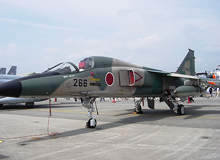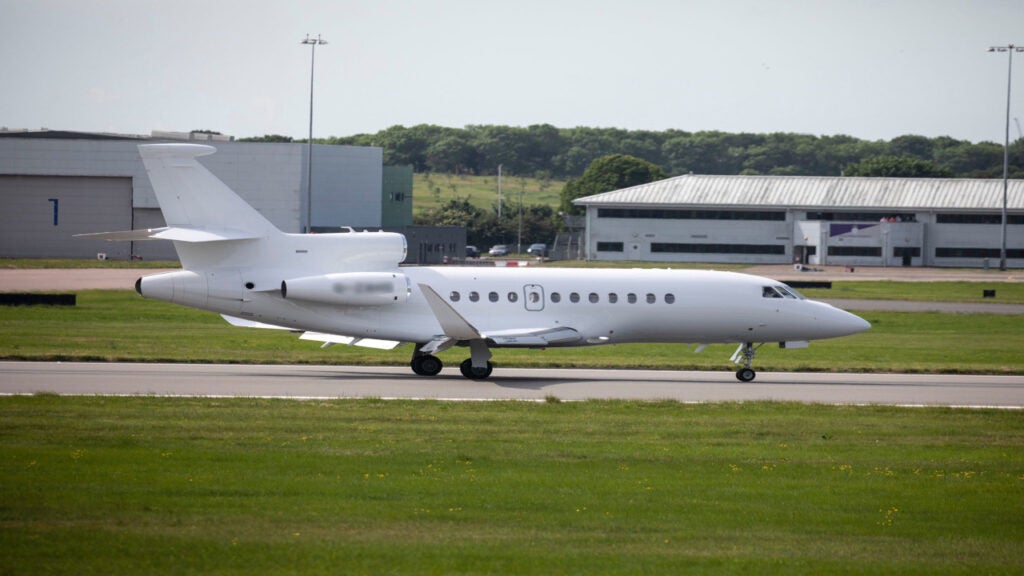
The Mitsubishi F-1 is a single-seat multi-role fighter aircraft designed and manufactured jointly by Mitsubishi Heavy Industries and Fuji Heavy Industries for the Japan Air Self Defence Force (JASDF). It was the first indigenous fighter aircraft built post-World War II. A total of 77 F-1s were built between 1977 and 1987.
The F-1 was retired from service in 2006. It was superseded with F-2A, which is derived from Lockheed Martin’s F-16 Fighter Jet.
Mitsubishi F-1 fighter design
The exterior design of the F-1 is similar to the Sepecat Jaguar fighter jet. The aircraft was designed by modifying its forerunner Mitsubishi T-2 advance trainer jet, which is built based on the Sepecat Jaguar.
The design was modified to include two wing pylons and a fuselage pylon, replace the rear cockpit with an avionics bay and an unglazed access hatch in place of a glass canopy.
F-1 development
In 1972, the JASDF announced its plan to build the strike fighter model (F-1) from the T-2 trainer jet. The development contract was awarded in 1973. Two T-2s were acquired by the JASDF to transform them into F-1 prototypes. The aircraft was developed to supersede the fleet of F-86 Sabres.
The F-1’s maiden flight took place in June 1975 and the aircraft entered service in April 1978. The JASDAF initially planned to build 160 units; however, budget cuts reduced the numbers to 77. Final delivery of the F-1 took place in March 1987.
The JASDF launched a service life extension programme (SLEP) in 1990s to increase the lifespan of an airframe from 3,500 hours to 4,000 hours. As part of the SLEP, 70 F-1s were overhauled between 1991 and 1993 by incorporating a modern fire control system, a robust canopy and an XGCS homing bomb.
Features
The F-1 aircraft has two drop tanks of 830l capacity, each under its centreline pylon and wings. A tubular antenna is fitted at the top of the tail fin and J / AWG-12 radar. It can attack from relatively short range and can be utilised in interception missions.
Cockpit
The all-digital cockpit is enclosed with a glass canopy to accommodate one flight crew. It is equipped with head up display (HUD) and J / ASQ-1 fire control system (FCS) developed by Mitsubishi Electric.
A radar warning receiver, a J / ASN-1 inertial navigation system, a J / APR-3 radar homing warning system, a J / APN-44 radar altimeter system, a J / A24G-3 air data computer, a strike camera system and imaging infra-red seeker system form part of the cockpit.
Armaments
The F-1 is armed with a 20mm JM61A1 Vulcan 6 barrelled Gatling cannon in the front fuselage section to fire munitions at the rate of 6,000 rounds per minute. The aircraft has seven hardpoints: four under the wings, one under the centreline pylon station and two wing tip missile rails. It can carry up to 2,721kg payload.
The aircraft can accommodate Mitsubishi AAM-1 and two AIM-9L Sidewinder air-to-air missiles, two Mitsubishi ASM-1 anti-ship missiles, JLAU-3A 70mm rocket pods, RL-7 70mm rockets, RL-4 125mm rockets and LAU-69 rocket pods.
It can also carry Mk-82 and M117 bombs weighing 226kg and 340kg, respectively. Other payloads incorporated in the aircraft are air-to-ground missiles and infra-red guided versions of MK82 and M117.
Ishikawa-Harima engines
The F-1 is powered by two Ishikawa-Harima TF40-801A turbofan engines, each rated at 22.8kN of dry thrust. The thrust afterburner of the engine is 35.6kN.
Designed and manufactured by IHI Corporation of Japan, the TF40-801A is a licence-built version of Adour Mk801 which is a variant of the Turbomeca Adour engine.
The dry weight of the engine is 3,300kg.
F-1 performance
The F-1 can climb at a rate of 118m per second. Its maximum speed is 1,700km per hour. The combat radius and ferry range of the aircraft are 556km and 2,870km, respectively. Its service ceiling is 15,240m.
The Global Unmanned Aerial Vehicles (UAV) Market 2011-2021
This project forms part of our recent analysis and forecasts of the global military aircraft market available from our business information platform Strategic Defence Intelligence. For more information click here or contact us: EMEA: +44 20 7936 6783; Americas: +1 415 439 4914; Asia Pacific: +61 2 9947 9709 or via email.




